
medalworld
-
Posts
65 -
Joined
-
Last visited
Content Type
Profiles
Forums
Blogs
Gallery
Events
Store
Posts posted by medalworld
-
-
Hello Jerome,
In re-reading this post , I just now realized that I forgot to thank you for the nice photo of the Concordia. Please accept my apology for this very late Thank You !
Frank
P.S. A few days ago, I came upon our handsome "Unknown Green Order" that we were chatting about last year. It's such an interesting and well made piece. I hope we will learn its name and origin someday.
0 -
Hi Gavin, I was just reading this interesting series of old posts on the OPBGG, also among my favorite Chinese ODMs. I have 1st and 2nd class sets and either 4th or 5th (can't recall), and the past discussion is making me want to dig them out tomorrow to enjoy them as I haven't seen them in a while.
What firm is YJA that you mentioned please?
Also in the photo of Tsao-kun that JapanX shows, we see on his bottom row at left (as viewed) what seems to be a White Eagle Order star. I don't recall seeing others wearing this great rarity. Has any new information been published about China's Order of the White Eagle?
Thanks, Frank Draskovic
0 -
On 22/06/2013 at 03:05, drclaw said:
These were gorgeous and signed by President Xu Shichang, who was the longest serving President of the Warlord Period (10 October 1918 - 2 June 1922) and also the ONLY civilian President of the Early Republic excluding acting Presidents.
I was watching these on YJA through a third party auction bid site but it deleted them without showing the final price.
Did you see what they went for?
0 -
On 10/31/2017 at 20:02, eurorders said:
I, too, am a lover of Bulgarian kingdom orders. As an aside, I have done some research on a side, but important, area related to the manufacture of original orders of decoration, namely, the fine and difficult art of enameling. I thought I would share it for the good of the cause. It makes me appreciate so much the arduous process of making original orders of decoration.
Excerpted and crediting the book on Enamels by the Smithsonian Illustrated Library of Antiques and prepared by the Cooper-Hewitt Museum. Distilled.
Enameling is an outstanding example of human skill and is a refined and sophisticated technique. It has been a craft patronized by the wealthy and for discerning collectors. The jewel-like brilliance of its vitreous surface is durable and the colors in which it can be produced range from the bold and vivid to the subtle and pastel.
The particular technical problems inherent in the enameling process with its need for successive firings and the fact that colors change during firing at different temperatures make the production of a really fine enameled piece something to be marveled it. Enamellers have rivaled if not surpassed the work of the finest jewelers.
Enameling is an unpredictable art and a combination of intuition and science that demands perception as well as skill for a successful conclusion.
Enamel is a vitreous glass glaze that is fused to a metal base. The chemical constituents are silica (sand), borates, alkalis (soda and potash), alkalines (lime, magnesia, lead) and oxides of metals for coloring. There are four4 basic types: opaque, opalescent, translucent and transparent. Production methods include: cloisonné, champlevé (raised field), basse-taille (shallow cut), guilloche (engine-turned), Plique a jour, also known as email de plique. There is also filigree and skan enameling as well as en plain (on an open field). Blue enamel is produced by cobalt. Carbonate of copper produces green, manganese produces purple, oxide of gold produces some pinks and reds. The color is affected by the constitution of the molten glass (flux) and by the type or quantity of the oxide. The majority of enamel colors cannot be mixed to give an intermediate shade. Most of them must be prepared with their own specific oxide.
The steps, condensed:
1. The article the enamel is applied to is washed and plunged into a diluted acid to etch the surface in order to give a good key (allover roughness) to which the enamel can adhere. The piece is washed again.
2. Raw enamel is pulverized with water until it is reduced to a fine power. The powder is washed multiple times in distilled water. It is dried and sifted through a fine sieve.
3. It is applied to metal either in powdered form mixed with water and gum tragacanth or by brush or palette knife in which case it must first be mixed with a volatile oil such as spike (lavender) oil or oil of sassafras.
4. Several layers are required to form a cover and each must be dried thoroughly then fired before the next is applied. Firing takes place in a kiln or furnace at temperatures between 600 and 850 degrees Centigrade (or 1110 to 1562 Fahrenheit). Intense white heat is essential to achieve the temperature at which enamel will fuse to metal. Firing takes only a few minutes.
5. Rapid cooling would have a detrimental effect, creating a brittle enamel that could easily crack or scale.
6. Different colors are fired at varying temperatures, those that can withstand the greatest heat, such as brown, blue and green, being fired first. There are multiple applications and firings. In the case of painted enamels, up to 20 firings may be needed. Each time an object is fired, great care must be taken to protect already used colors from damage caused by overfiring. Many articles also are coated on both sides. Once the metal is enclosed between two layers of enamel, the combined substances react simultaneously, another difficult task.
7. The enamel is filed down with carborundum until smooth, fired then polished with the finest pumice powder.
Excerpted from the book, Enameling for Beginners by Edward Winter. Distilled.
Raw materials for opaque white enamels will melt into liquid glass in from three and a half to four hours, smelting at 2,300 degrees F. By changing the proportions of the ingredients, the opacity or transparency, hardness or softness of enamel is determined. These ingredients are: silica, arsenic oxide, potassium carbonate, borax and lead oxide. (Feldspar is also an ingredient).
Focused flames are directed onto the enamel to keep it flowing freely. The molten enamel can be poured into tanks of water to break it up into small particles called frit. Lumps of frit can be crushed into powder that will pass through an 80 or 100 mesh sieve. The powder is then shaken through a sieve onto a platform.
Enamel is wet ground in a ball mill. A typical mixture for a small size mill would be 100 parts frit, six parts of clear clay, a fourth part of potassium carbonate and 40 cubic centimeters (about a cup) of water. The produces a slip or slush enamel.
When grinding is completed, the enamel is dumped, along with the porcelain grinding balls, into a large 200 mesh sieve resting on a basin. The slush enamel is then shaken through the sieve into the basin.
Chromel steel tongs and fork can be used for placing enamel pieces in and out of the furnace. Chromel steel trivets, fire-clay stilts and chromel wire screens support enamel pieces for firing. Enamels of unusual shape need specially designed trivets to hold them successfully.
Gum tragacanth, a whitish vegetable gum derived from sea plants, is applied in solution form to metal surfaces to bind the dry, sifted enamel upon them before firing. The flakes should be dissolved by boiling in a basin of water. The resultant solution which should have a watery consistency, is applied with a camel’s hair brush. A few drops of alcohol will keep it from fermenting.
Vitreous enamel is the producing of the melting together of the correct proportion of materials in a smelter that reaches a temperature of about 2,100 degrees F.
A complete book could be written about the science of producing colors and the great assortment of subtle tones and shades which are crafted. With most manufacturers, these formulae are guarded secrets and handed down. Color is given to the glass enamels by the addition of certain metallic oxides before the raw material batch is smelted and during this melting process the colored enamel is made.
Liquid slush or enamel slip colors are processed differently, since colorants and oxides are added to the clear enamel frit by the manufacturer and ground up with the addition of prescribed proportions of water, fine clay and chemical salts in the porcelain ball mill.
Enamels for steel, copper and silver are similar in so far as firing temperature is concerned, fusing after two to three minutes at 1,450 to 1,500 degrees F.
Excerpted from the book, Metalwork & Enameling by Herbert Maryon. Distilled.
Enamel should not be exposed to the direct blast of the flame or it may be discolored. The method is dangerous for firing small silver articles, they melt so easily. Iron scales or rust will discolor clear glass flux or frit, so the enamel must be protected against any accidental flaking of the iron support on which it is fired.
All colors must be ground equally find and the heat of furnace needs to reach them all to the same (amount of coverage).
In bassetaille enamel, the metal groundplate is chased or sometimes engraved in such a way that its modeled surfaces beneath the enamel form an essential part of the design. Undulating surfaces are visible through the enamel that covers them and take an important share in producing the final effect.
If some wet, powdered enamel is to be laid down beside another patch which is still wet, care must be taken that the boundary line between them does not become irregular. The most convenient way to prevent this is to add a little gum tragacanth to each batch of enamel and to allow the first colors to dry before the next are laid alongside them. They will not then spread much on to their neighbor’s territory.
In a bassetaille enamel, because so much of its effect depends upon the modeling of the metal beneath it, the enamel itself must have a level and well-polished surface. All depressions in the enameled surface should be filled up and refired and the surface ground level and polished.
Any soldered joints must be protected by painting them with rouge or whiting. For more elaborate work, it is sometimes necessary to provide a support made from plaster of Paris. The plaster is made to envelop large portions of the work, leaving exposed only those parts on which the enamel is to come. When all the soldering and cleaning up has been finished and the work is ready for the enameling, it is set up on an iron furnace plate. Plaster of Paris is mixed in a spoon and spread over the work with a spatula. Every part may be covered with plaster except those surfaces which are to be enameled. The work may be fired again and again if necessary, but at no time must a soldered joint be left unprotected.
This post about the extremely difficult process of expert enameling is an excellent reminder to all of us who buy enameled insignia for our collections. The collector's best friend to inspect enamel and other small details is a high quality magnifying glass. I've found that magnifiers with at least two powers is best; one lens of about 5X to get an enlarged view of a main section, then a 10X at least to view tiny areas like hallmarks, makers marks and telltale signs of fakery like casting pits, etc.
Having attended incalculable numbers of numismatic conventions over 55+ years of coin dealing and collecting, where magnifying glass are seen everywhere, I am always amazed when attending medal or militaria shows where one hardly sees a collector using a magnifier to view a medal or enameled Order. They seem more apt to accept the notion that what they're looking at, at arm's length, really is what it purports to be...but we know that very often, and increasingly now as with these excellent Bulgarian fakes, they are not. A quality magnifier used wisely will pay for itself many times over.
0 -
After posting the above, I found a hint in Burke's that led me to a website. This is most likely an insignia of the Order of the Blessed Virgin Mary of Mercy. The still vibrant order describes itself at its website as shown below. 2018 is its 800th anniversary.
"The Order of the Blessed Virgin Mary of Mercy is an international community of priests and brothers who live a life of prayer and communal fraternity. In addition to the vows of poverty, chastity and obedience, their members take a special fourth vow to give up their own selves for others whose faith is in danger.
The Order, also called the Mercedarians, or Order of Mercy, was founded in 1218 in Spain by St. Peter Nolasco to redeem Christian captives from their Muslim captors. The Order exists today in 17 countries, including Spain, Italy, Brazil, India, and the United States. In the U.S., its student house is in Philadelphia, and it also has houses in New York, Florida, and Ohio.
Today, friars of the Order of Mercy continue to rescue others from modern types of captivity, such as social, political, and psychological forms. They work in jails, marginal neighborhoods, among addicts, and in hospitals. In the United States, the Order of Mercy gives special emphasis to educational and parish work.
The spiritual and communal life of the friars include prayer, meditation, Holy Mass, recreation, and apostolate. Their life is based on the Rule of St. Augustine and the Constitutions of the Order.
Overall, the Order of Mercy commits itself to give testimony to the same Good News of love and redemption that it has shown since the beginning of its history."
Additional comments and photos of other examples of the insignia are encouraged.
0 -
Hi Gents:
Along with the unknown "Portuguese" Order we've been chatting about, here is another unknown Commander cased set originating from Italy. It also consists of a neck badge in gilt AE and enamels and includes a miniature and lapel rosette in a plain red fitted case. There are no markings on the insignia and the case is likewise unmarked. There was also, inside the box, a 1949 transmittal letter to the recipient, a Mr. Giulio Fronza of Milan. However, there is no mention of the Order's name in the letter. So here we have a cased medal and a transmittal letter with still no name anywhere in sight!
I've seen this insignia two or three times over the last few decades and someone once told me its name, but I have forgotten. Can someone remind me please if you know it.
Thanks, Frank D.
0 -
4 hours ago, quivivefrance said:
Hello everyone,
Yes I have the same commander, Cravanzola also. All the orders I have seen so far were at grade and of the same manufacture. The cross of the order of Christ and the armilar sphere are the traditional symbols of Portugal, but also of Brazil. I never found this order in Portugal, but in Italy and Brazil. I think it is an ephemeral order, similar to that of the Concorde, with its same distribution, in Italy and Brazil (the Italian community is well represented). Italy was very prolix in these ephemeral orders in the immediate aftermath of the war, often a simple declaration at a notary allowed to create a new order of nobility or hereditary.
Only the discovery of a diploma will allow us to put a name on this unknown order.
Hello Jerome, Nice to "meet" you. Many thanks for your comments. You are correct, unless someone comes up with a solid attribution, or a document with the insignia, we can only guess at it's origin and name. Speaking of names, you mention Concorde. I don't know it, so I checked the "Self-Styled Orders" index in Burke's, but can't find it there either. What is it please?
Regarding accompanying documents with unknown insignia, I just started another unknown inquiry under Italy. That medal had a transmittal letter in the box, but it does not mention the name of the "Order" ! Please have a look there. Frank D.
Frank D.
0 -
6 hours ago, paul wood said:
Frank. It is very similar to the order of Aviz, including the ribbon. Given Aviz is a military award could it be awarde to military explorers?
Paul
Hello Paul, Nice to hear from you. I hope all is well.
It's a handsome and well made insignia with the pierced globe and crossed batons with little globes at the ends. Wouldn't it be nice if we could name it ourselves? I'd agree with the "Order of Military Exploration", sounds terrific! But our pal quivivfrance has offered another scenario. He could be right, but we still need a firm attribution. Maybe someone will have a document or receipt for one?
Best Wishes, Frank
0 -
-
Hello All,
I recently acquired this Commander set in a case and request some help please with an accurate attribution if anyone knows for sure. It was purportedly a Portuguese "Order".
It is large, 90mm to top of globe suspension x 40 mm wide, the cross with the same form as an Order of Christ, but in green. It is quite well made of gilt silver. The suspension is an armillary globe, thus it's likely something geographic, perhaps an Order of Geographic Merit from a learned society?
Consists of a neck badge as shown in the photo, with Commander lapel rosette-pin with two gold wings, plus a handsome little miniature and a ribbon bar all in a Cravanzola, Roma, green case of issue with gold imprint of the Order arms on top. I'd say vintage is ca.1940s, +/- a few years.
Can anyone help with an identification please? Many thanks, Frank Draskovic
0 -
The attribution found by member Noor is correct and confirmed. Many thanks for his eagle eye in finding it !!!
I hope to be able to return the favor some day.
Frank Draskovic
0 -
Another view at 400 dpi, reverse detail, showing the thick, broad weave and stitching, along with a few moth holes and tears, stains, etc. I have no doubt about genuineness. I'm more interested in the period used and if this size was particular to a certain rank perhaps?
3-20-18. Here are the rings that were attached to the corners, well oxidized now due to age. Would anyone know the current retail market value of this flag?
0 -
Hello member Noor, Many thanks for your success in finding a similar medal for sale with an attribution. The first thing I did was go to my "Quinot" book on Belgian orders and medals to confirm..."Recueil Illustre Des Orders De Chevalerie et Decorations Belges De 1830 A 1963" by H. Quinot, 5th edition. It was not listed there in the Red Cross, or any other, section, though I did find the ribbon being used for a different medal entirely. I'll contact jkmilitaria and ask for an attribution. They are experts on Red Cross ODMs and should have more info on it. Thanks again Noor !
Regards, Frank D.
0 -
If you click on the picture a few times, it will enlarge enough to see the weave and stitching. I'd guess it to be a cotton or linen fabric, certainly not modern.
Another view at 400 dpi, reverse detail, showing the thick, broad weave and stitching, along with a few moth holes and tears, stains, etc. I have no doubt about genuineness. I'm more interested in the period used and if this size was particular to a certain rank perhaps?
0 -
Hi to Bayern in Argentina. I'd say the colors are more of a faded light cobalt blue, rather than gray, but a good hint about a possible nurse's cloak badge. The mystery continues.
Gracias amigo! Regards, Frank
0 -
I was researching this Stalhelm flag recently, regarding the predominant period used, who by (rank?), etc., and thought I'd post it for comments. Presumed to be from the 1919-1933 period, it measures 5 3/8 inches (13.5 cm) vertical by 9 inches (23 cm) on each long side, and is well soiled with 100% original Weimar period dirt. Not shown are two small rusty rings which would have gone on the vertical ends for mounting. I'm thinking it's likely a car flag. Any comments about its history will be most appreciated. Thanks.
Frank D.
0 -
A museum curator has asked me for an ID of this unknown award. It has a vaguely Baltic look to it, though it could be from anywhere. The Red Cross is a major clue, but from where? The marking on the reverse center is not an inscription, only an old inked museum accession number of no significance. My usual suspects for obscure attributions have no clue. Hopefully one of our members will know it. Many thanks for looking, Frank Draskovic
0 -
A museum curator has asked me for an ID of this Belgian award which seems to be on a lady's ribbon. The legends either side of the lion say "Honneur / Fraternite". My usual suspects for obscure attributions have no clue. Hopefully one of our members will know it. Many thanks for looking, Frank Draskovic
0 -
For those collectors interested in the topic of Nicaraguan ODMs, the cover of the standard reference on Nicaraguan numismatics is shown in the attachment. Chapter three on the nation's medals, pages 173 through 301, covers all Nicaragua's Orders, Decorations & Medals, military and civilian, as well as selected historical medals (medallions) and misc. medals, from 1854 to the early 21st century, the book being published in 2002. As a fully illustrated comprehensive reference, in addition to medals, the coins, paper money and tokens are also receive excellent coverage. To my knowledge there was only one print run when published, but as a specialized work of limited interest, there should still be copies available from numismatic booksellers. I seem to recall the price was about $75 or so. For medal collectors interested in modern ODMs from the second half of the 20th century to about 2000, I know of no other book but this one where such information can be found.
0 -
Hello Kharis,
As about six months have gone by with no reply from you, I thought I'd check in to ask how your research is going? Have you found any interesting biographical information yet?
I still would like to acquire (buy) an original nice old photo of CI Kelley in uniform. Could you ask your Mom if she has one to spare?
I look forward to hearing back from you. Many thanks,
Frank Draskovic
0 -
-
3 hours ago, scottplen said:
See nothing wrong with it ! Remember it's 100 years old or so !
Hi Scott, Re: your "wrong" comment..."wrong" is subjective, not easily quantifiable. And age has nothing to do with condition. There are ancient coins that are in perfect mint state after having existed for 2000 years. The point I was making is that there are gradations of condition with medals as with coins or any collectible. And unless we're going to keep our collections in the family when we're gone (they'll sell too eventually), we should figure we're going to have to sell at some point. So why not try to acquire the best condition possible, because future potential buyers will want to buy the best condition possible too.
In 50+ years of collecting, buying and selling as a full-time dealer, I've seen large collections sold by collectors who spent well into five figures and held the items for 20 to 40 years. But they almost always bought the cheapest low-end stuff they could find, and it's still low end and not very desirable when sold. My observations of the current market is that buyers want rarity and top condition items and are willing to pay a premium to get them.
By the way, these comments refer to anonymous or un-named Orders or medals only, i.e., as in a type collection. Named or attributed medals are a whole different ballgame.
Here's my Zahringer Lion. I loved it when I bought it 20+ years ago, and if I could find it, I'm sure I still would!
Happy Collecting, Frank D.
0 -
Hi Dansson, All things are relative and if you got a very good buy and like it, that's all that matters. I was under the impression that you were seeking a single insignia for a type collection, thus my comments. Here's a link to a seller of the OEK catalog I mentioned.
Happy Collecting! Frank D.
0 -
On 5/17/2013 at 16:34, drclaw said:
Note: Only one award of the Order of the White Eagle is known – a Second Class Order that Cao Kun likely awarded himself when President. The Regulations for the White Eagle specified it could only be awarded for extraordinary merits in time of war although the President was automatically entitled to wear the award.
What fantastic coverage of a most interesting and rare award. It makes me wish I would have bid higher on a few of these that were in Spink sales some years ago.
But I'm more intrigued right now about this comment on the Order of the White Eagle. Do you mean that only one award of that Order was ever made? Or that only one actual insignia of this order is known to be extant at this time? If the latter, are photos of that 2nd Class published anywhere? I would like to know more about this great rarity.
Frank D. at medalworld
0


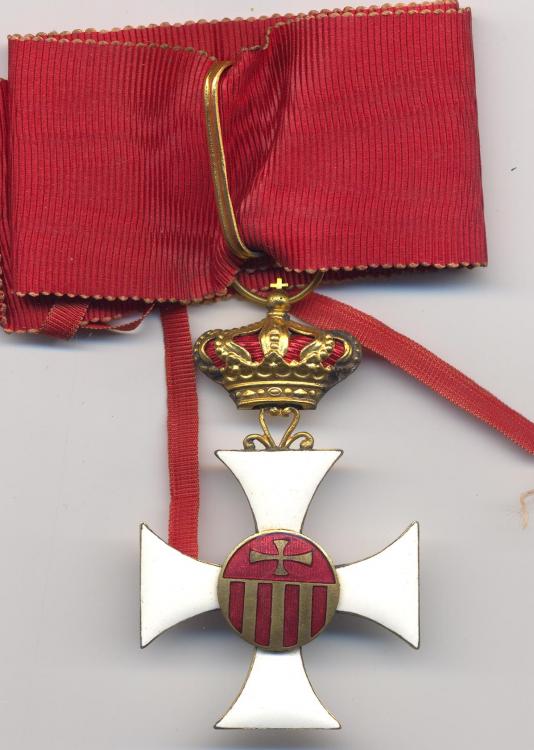

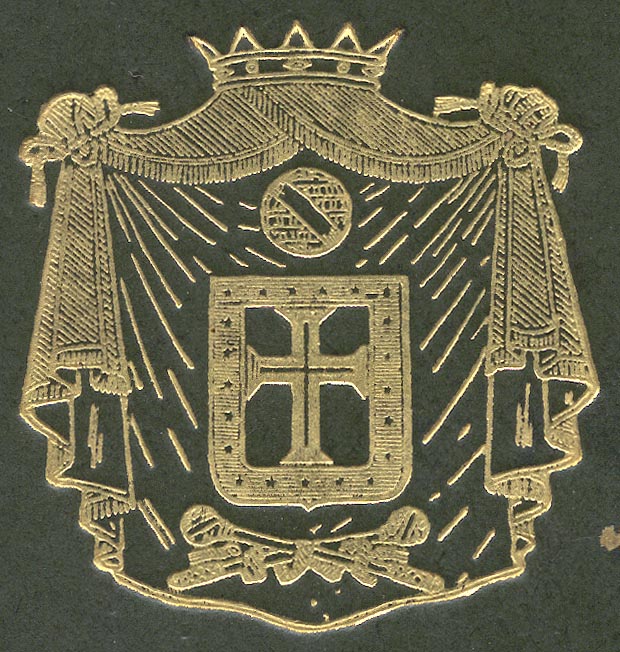
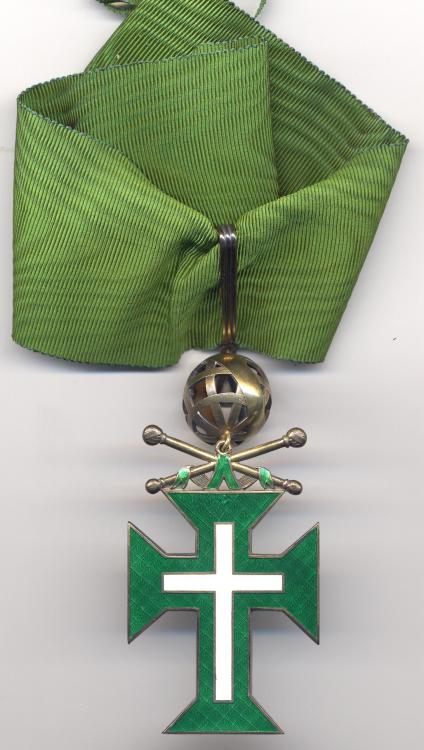
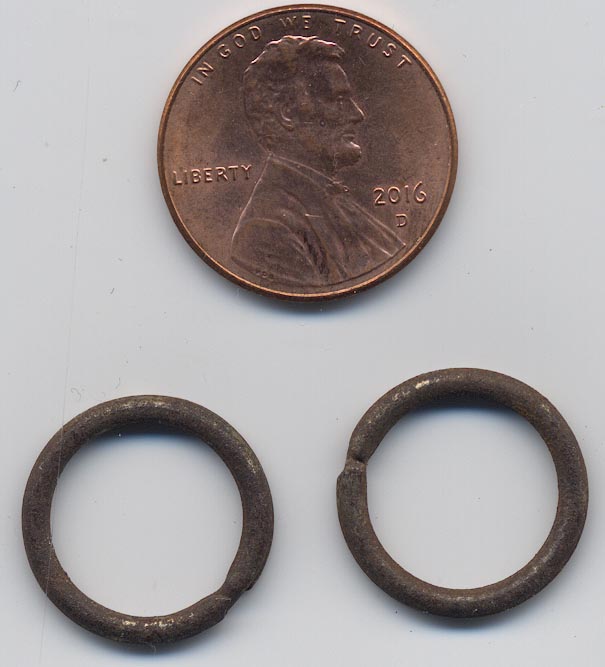
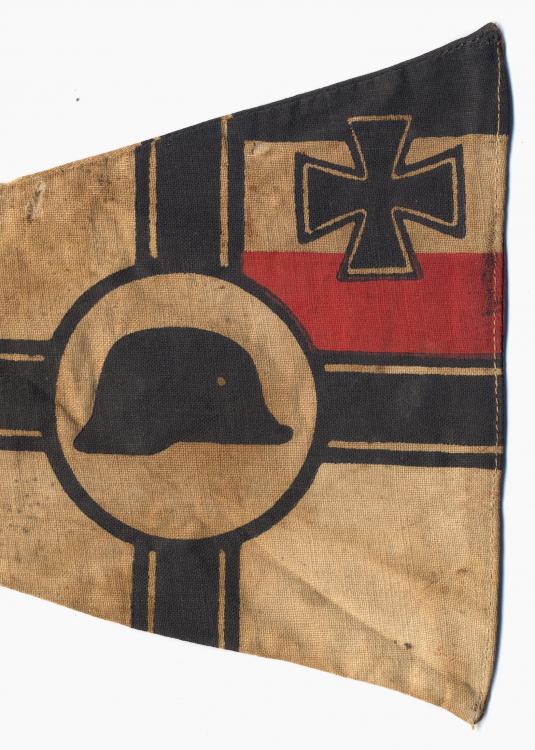
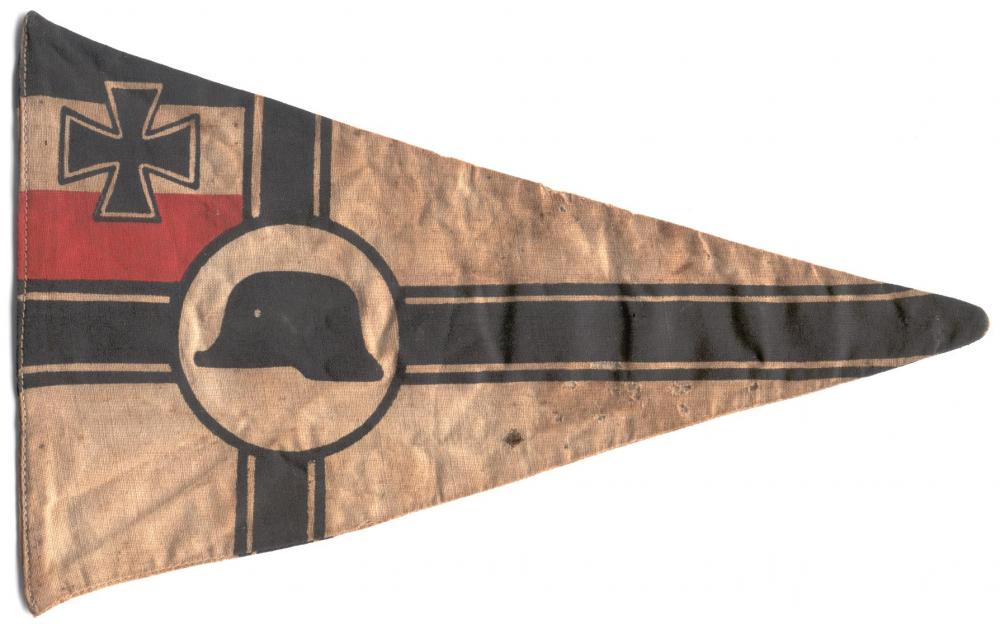
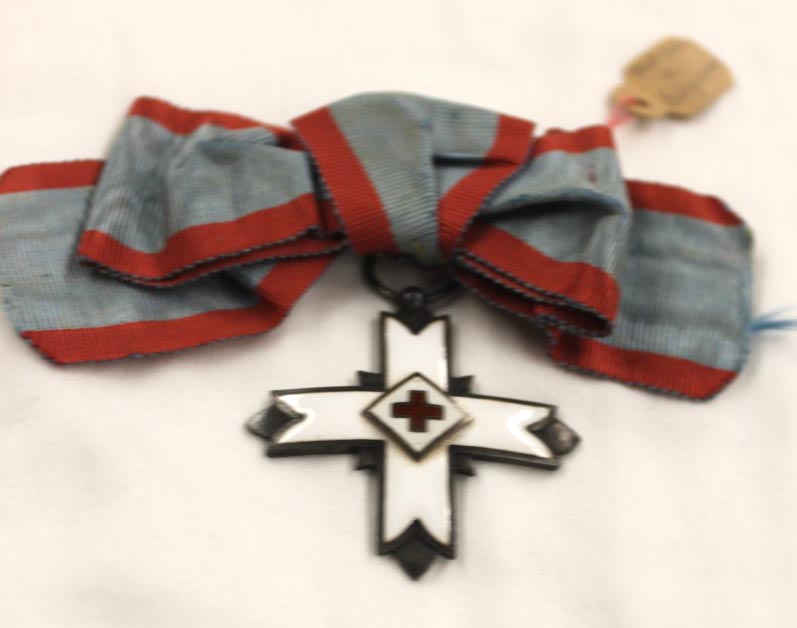
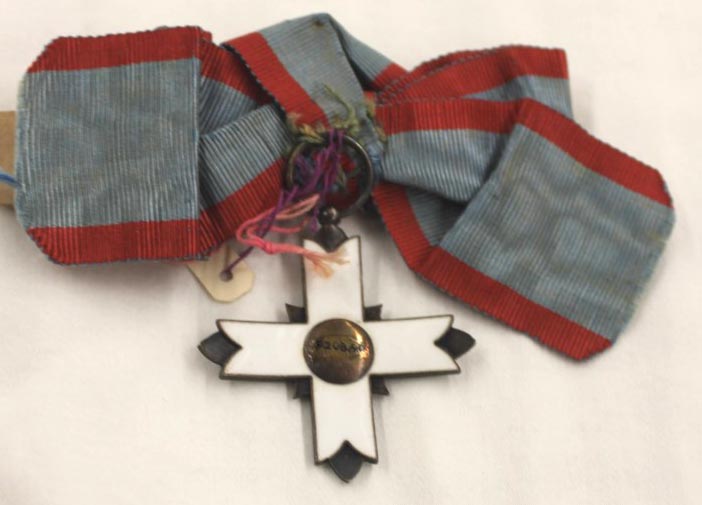
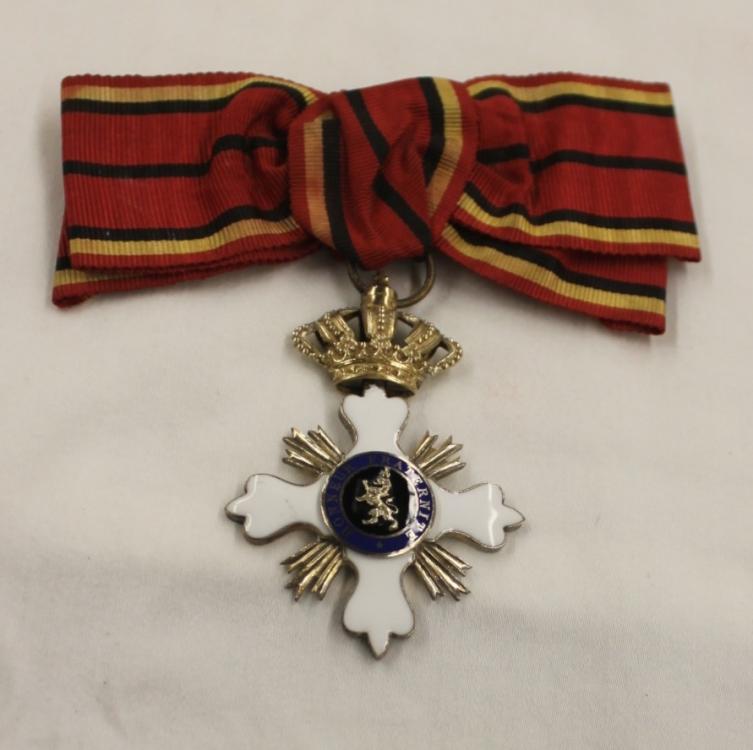
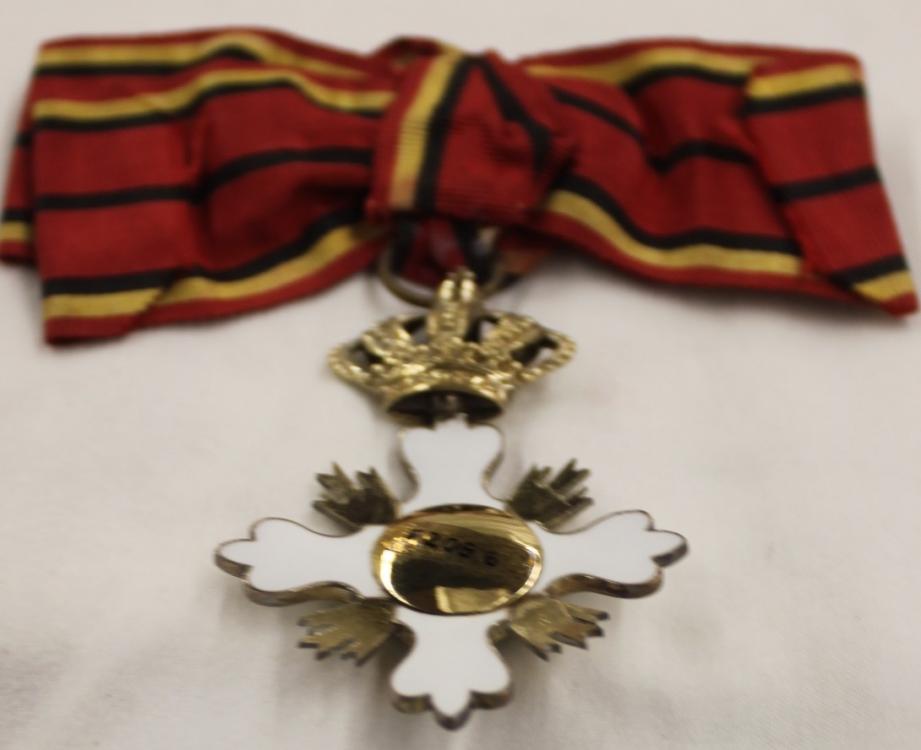
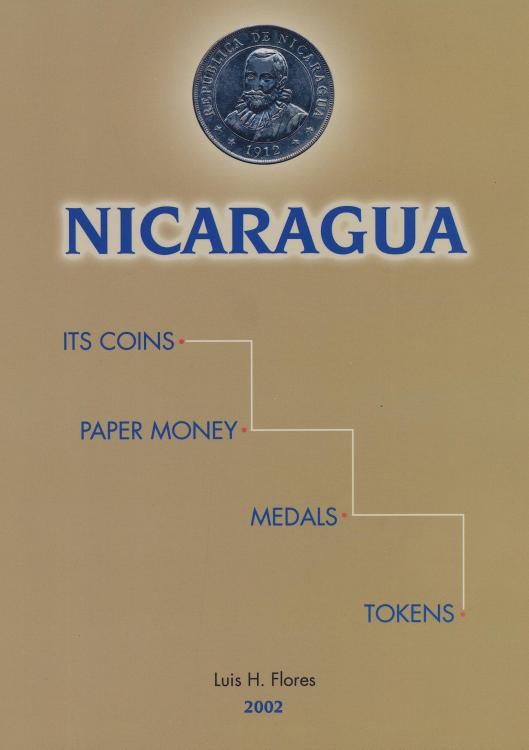
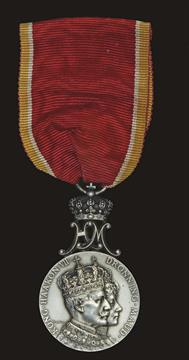
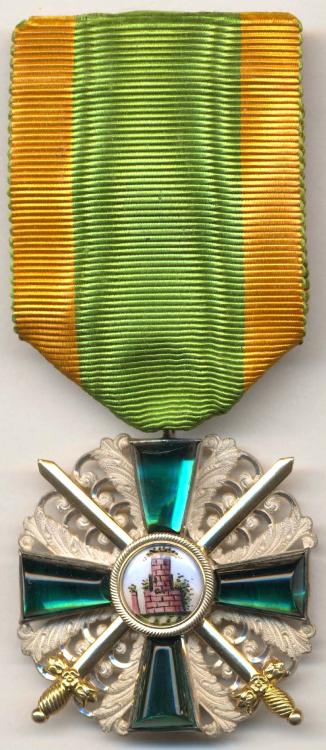
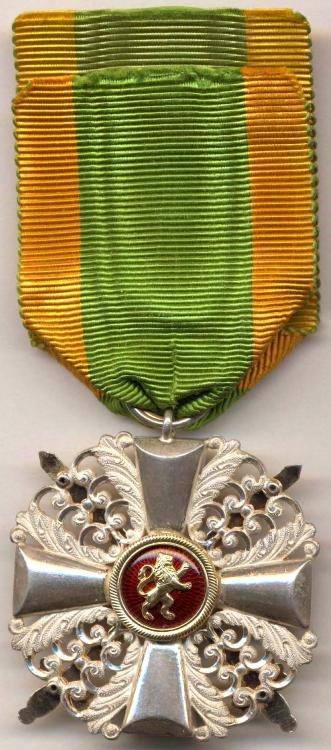
Bullion cap badge inquiry
in Great Britain: Militaria: Badges, Uniforms & Equipment
Posted
Hello All,
Kindly have a look at the front and back photos of a presumed cap insignia nicely made in bullion thread, about which I have had no luck in identifying. I naturally thought the "R" stood for reserve. My old Rosignoli book on WW 2 badges and insignia does not mention it. Dimensions are: height 2 15/16" and width 3 9/16". I'm sure someone here will know what it is and when it was used. Thanks for looking.
Frank D.